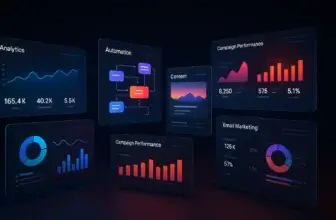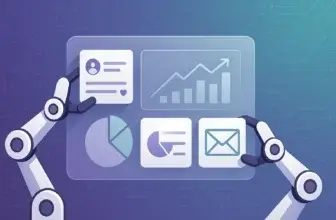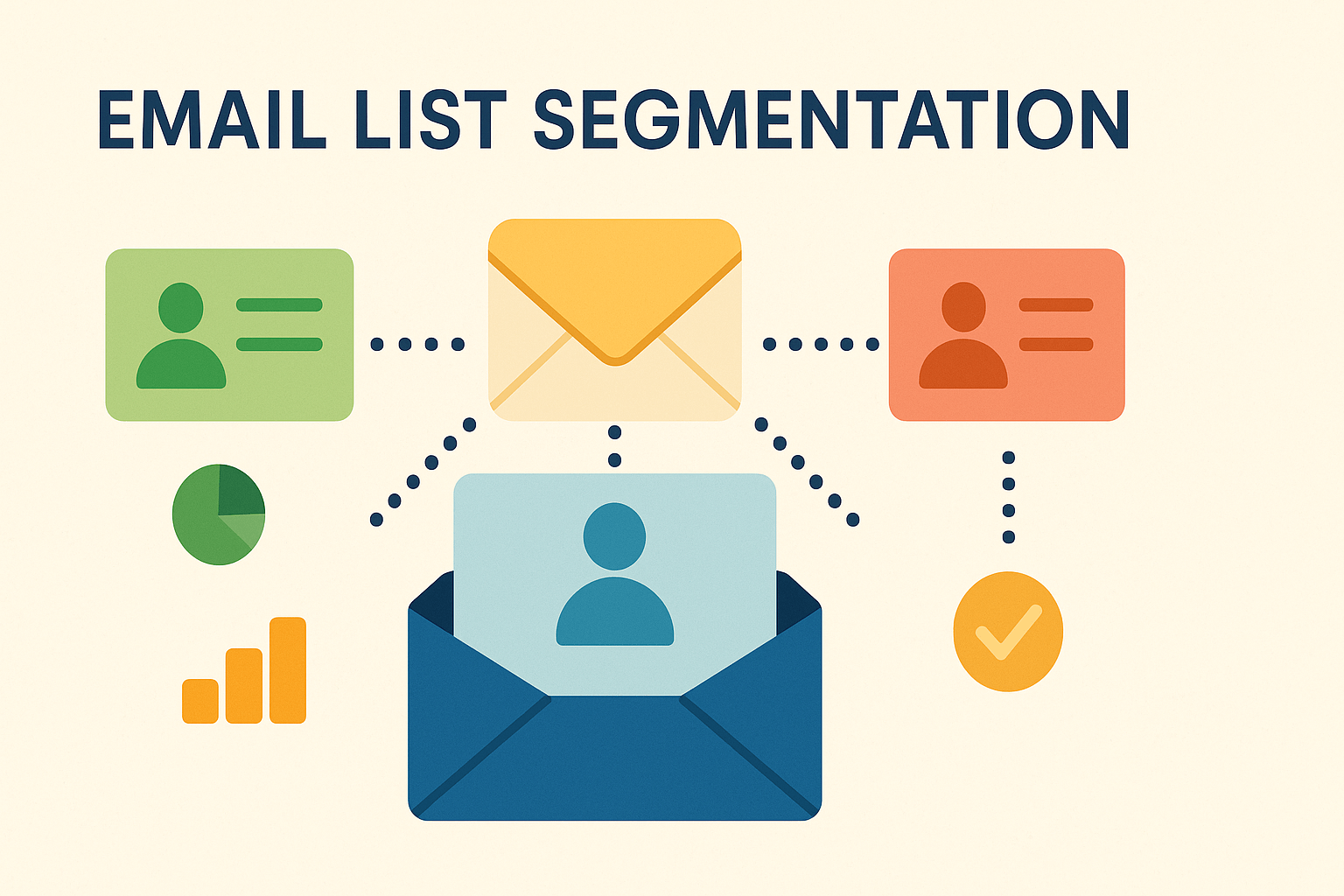
Introduction
Why Email List Segmentation is a Game-Changer
Email marketing is far from dead; in fact, it’s one of the most effective channels for connecting directly with your audience. But here’s the catch: sending the same email to your entire list just doesn’t work anymore. Your subscribers expect relevance, personalization, and value.
Email list segmentation tips can be the game-changer your email marketing strategy needs.
By dividing your audience into meaningful segments based on their behavior, demographics, interests, and more, you’re able to deliver content that actually resonates. You stop shouting into the void and start speaking directly to your subscribers’ needs, which leads to:
- Higher open and click-through rates
- More conversions and purchases
- Lower unsubscribe and spam complaint rates
This article will walk you through expert tips for segmenting your list effectively, from beginner-friendly tactics to advanced strategies. Whether you’re running a small eCommerce brand or managing campaigns for a SaaS powerhouse, these tips will transform your email marketing results.
What is Email List Segmentation?
At its core, email list segmentation is the process of dividing your email subscribers into smaller, targeted groups based on specific criteria.
Instead of treating your list as one giant bucket, you segment it into smaller buckets like:
- People who’ve purchased in the last 30 days
- Subscribers who only open your newsletters on mobile devices
- Leads who downloaded a specific eBook
- Customers in a particular geographic location
Why does this matter? Because relevance = results. When you send emails tailored to a group’s specific interests, behaviors, or position in the customer journey, you make them feel understood, and that’s how you build trust and drive action. 💬
How It Works (Real-Life Example)
Let’s say you run an online shoe store. You wouldn’t want to send a promo for men’s hiking boots to a female customer who recently bought heels. Instead, by segmenting based on purchase history and gender, you can send each customer exactly what they’re more likely to be interested in.
Smart segmentation means smarter marketing. You’re no longer guessing, you’re sending with purpose. 🎯
| Process | Traditional CRM | AI-Powered CRM |
|---|---|---|
| Data Entry | Manual input by staff | Automated capture from multiple sources |
| Lead Scoring | Based on simple rules | Dynamic scoring using predictive models |
| Customer Segmentation | Manual grouping by criteria | Automatic clustering based on behavior patterns |
| Task Management | Calendar-based reminders | Intelligent prioritization with timing recommendations |
| Sales Forecasting | Historical trend analysis | Predictive modeling with multiple variables |
Benefits
When you segment your email list effectively, you’re not just organizing subscribers, you’re unlocking a range of benefits that can dramatically improve your marketing ROI. Here’s exactly what you stand to gain:
1. Sky-High Open and Click-Through Rates
Sending emails your audience actually wants to read? That’s the fastest way to boost your open and click-through rates.
When subscribers receive content that aligns with their interests, they’re more likely to:
- Open your emails
- Click on your CTAs
- Explore your offers
💡 Pro Tip: Segment by behavior, like people who clicked on a specific product in your last email, and follow up with related offers or updates.
2. Personalized Experiences = More Conversions
Generic emails often get ignored. Personalized ones? They drive results.
By using segments, you can:
- Recommend relevant products based on past purchases
- Send exclusive offers to loyal customers
- Tailor onboarding flows for new subscribers
This kind of hyper-targeted content leads to higher conversion rates because you’re making your subscribers feel like you truly “get” them.
3. Lower Unsubscribe and Spam Complaint Rates
Ever unsubscribed from a list because the content felt irrelevant or too frequent?
Your audience has too.
Segmentation allows you to:
- Respect subscriber preferences and frequency settings
- Avoid bombarding people with irrelevant messages
- Build trust with your audience by showing them you listen
As a result, your list stays healthier, and your email deliverability improves.
4. Increased Customer Retention
Once someone becomes a customer, the job isn’t done. You want them to stick around, keep buying, and even advocate for your brand.
Use segmentation to:
- Create re-engagement sequences for inactive users
- Send loyalty rewards to your best customers
- Offer tailored content that solves their unique challenges
Nurturing your existing customers with segmented messaging helps you build long-term relationships, not just one-time sales.
5. Better Insights and Reporting
When you segment your emails, it becomes much easier to understand:
- What type of content works best
- Which audience responds most
- Where there’s room for improvement
That level of insight is gold for refining your strategy. You can double down on what works, and fix what doesn’t – without flying blind.
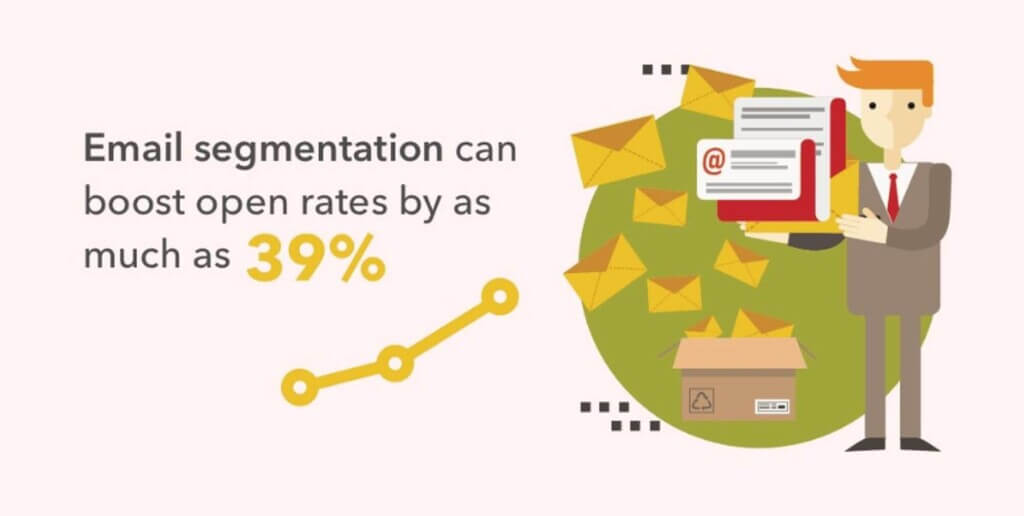
Key Segmentation Criteria
When it comes to email list segmentation, knowing how to divide your audience is just as important as why you’re doing it. The right segmentation criteria can help you laser-focus your messaging, drive stronger engagement, and increase sales without spamming your list.
Here are the most impactful ways you can segment your list today:
| Segmentation Type | What It Includes | Example Use Case |
|---|---|---|
| Demographics | Age, gender, income, education, job title | Promote student discounts to the 18–25 age group 🎓 |
| Geographic Location | Country, city, region, time zone, climate | Send a winter coat promo to cold-region subscribers ❄️ |
| Behavioral Data | Purchase history, website visits, email clicks, cart abandonment | Trigger a follow-up email after cart abandonment 🛒 |
| Customer Lifecycle Stage | New subscriber, first-time buyer, loyal customer, inactive user | Send a reactivation campaign to dormant customers ⏳ |
| Email Engagement | Open rate, click rate, response activity | Re-engage users who haven’t opened the last 5 emails 📭 |
| Interests & Preferences | Topic choices, product categories, survey results | Recommend skincare tips to users who showed interest in beauty products 💅 |
| Device or Email Client | Mobile, desktop, tablet, email apps | Optimize layout and CTAs for mobile-first readers 📱 |
Top Email List Segmentation Strategies
Once you’ve nailed your audience data, it’s time to put it to work. These email list segmentation strategies help you deliver hyper-relevant messages that get opened, clicked, and acted on.
1. Segment by Purchase History
Use past buying behavior to suggest relevant products, upsell, or remind customers to reorder.
📌 Example: Recommend accessories for a recently purchased product.
2. Segment by Engagement Level
Identify active vs. inactive subscribers. Send promos to engaged users and reactivation campaigns to dormant ones.
📌 Track opens, clicks, and last interaction date.
3. Segment by Customer Lifecycle Stage
Tailor your messaging based on where subscribers are in their journey – new leads, loyal buyers, or churned customers.
📌 Example: Welcome emails for new signups; VIP offers for repeat buyers.
4. Segment by Location
Adjust timing, promotions, or content based on user geography and time zone.
📌 Send local event invites or season-based deals.
5. Segment by Preferences
Let users choose what types of emails they want and how often.
📌 Use a preference center to collect this data early on.
6. Segment by Behavior
React to how subscribers interact with your brand, cart abandonment, page visits, or email clicks.
📌 Trigger follow-ups after key behaviors for better timing and relevance.
7. Segment by Survey or Quiz Results
Use feedback and quiz answers to personalize future campaigns around goals, pain points, or interests.
📌 Example: Send different nurture flows based on a quiz result.
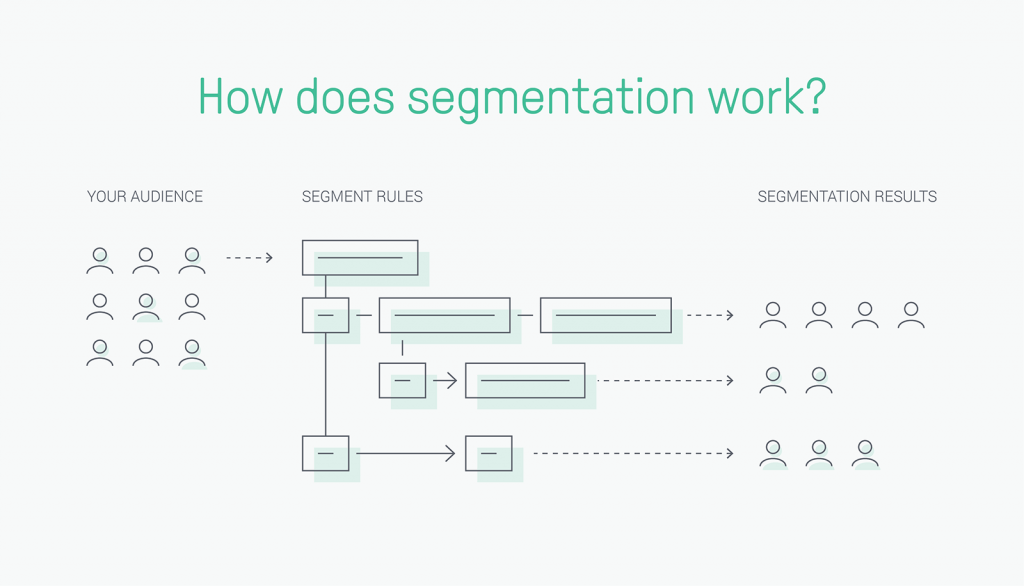
Best Practices
To make the most of your email segmentation strategy, follow these tried-and-true best practices:
1. Keep Your Data Clean
Regularly update and clean your email list to remove:
- Inactive users
- Duplicates
- Invalid or bounced addresses
💡 A clean list = better deliverability and engagement.
2. Collect the Right Data Early
Use signup forms, surveys, and preference centers to gather:
- Interests
- Content preferences
- Location and demographics
- The more relevant data you collect up front, the more powerful your segmentation will be.
3. Don’t Over-Segment
Creating too many micro-segments can:
- Make campaigns hard to manage
- Lead to thin, underperforming groups
- Burn out your content creation team
Stick to segments that offer real strategic value.
4. Personalize Based on Segment
Tailor subject lines, copy, visuals, and CTAs based on what’s relevant to that audience. Use dynamic content blocks to scale personalization efficiently.
5. Test, Track & Optimize
Run A/B tests across your segments to learn what works best:
- Which segments respond most?
- What content drives clicks?
- When is the best time to send?
- Then, refine and iterate to improve performance over time.
Common Mistakes to Avoid
Even the best marketers can slip up with segmentation. Here’s how to stay on track by avoiding common pitfalls and what to do instead:
| ❌ What to Avoid | ✅ What to Do Instead |
|---|---|
| Creating too many micro-segments | Focus on meaningful, strategic segments that are easy to manage and scale |
| Ignoring data hygiene | Regularly clean your list to remove inactive or invalid emails |
| Using outdated or static data | Update segments dynamically as subscriber behavior evolves |
| Sending the same content to every segment | Personalize content based on segment needs, interests, or actions |
| Neglecting to test segmented campaigns | A/B test subject lines, CTAs, and content within different segments |
Conclusion
Email list segmentation isn’t just a feature; it’s a strategy that separates high-performing campaigns from those that fall flat.
By grouping your subscribers based on behavior, interests, location, and more, you’ll create emails that feel more personal, relevant, and timely – the secret ingredients to higher open rates, conversions, and customer loyalty.
Whether you’re just starting or optimizing an existing strategy, use the tips, tools, and best practices from this guide to start segmenting with confidence. And don’t forget: the best results come from testing, learning, and refining over time. 📈
Want to get even more out of your email strategy? Explore our guide on how to use the best email marketing practices to power up your entire approach.
FAQ
1. What is email list segmentation?
It’s the process of dividing your email subscribers into smaller groups based on criteria like demographics, behavior, or engagement levels.
2. Why should I segment my email list?
Segmented emails get higher open rates, more clicks, and fewer unsubscribes because they’re more relevant to your audience.
3. How do I choose the right segmentation criteria?
Start with data you already have, such as location, recent purchases, or engagement, and grow from there based on your goals.
4. How often should I update my segments?
Review and refresh your segments at least once a quarter to ensure accuracy and relevance.
5. What tools help with segmentation?
Platforms like Brevo, ActiveCampaign, Mailchimp, and Klaviyo are great for managing segments.
6. Can I segment a small email list?
Yes! Even basic segmentation like interests or location can have a big impact, no matter your list size.
7. Should I personalize emails for each segment?
Absolutely. Tailored content boosts engagement and helps build trust with your subscribers.
8. How do I handle inactive subscribers?
Create a segment for them and launch a re-engagement campaign to win them back, or remove them if needed.
9. What’s a good example of behavior-based segmentation?
Sending a discount to users who viewed a product but didn’t purchase is a common and effective example.
10. What’s the biggest mistake with segmentation?
Over-complicating it. Start simple and optimize over time. Too many segments can lead to messy, unmanageable campaigns.

